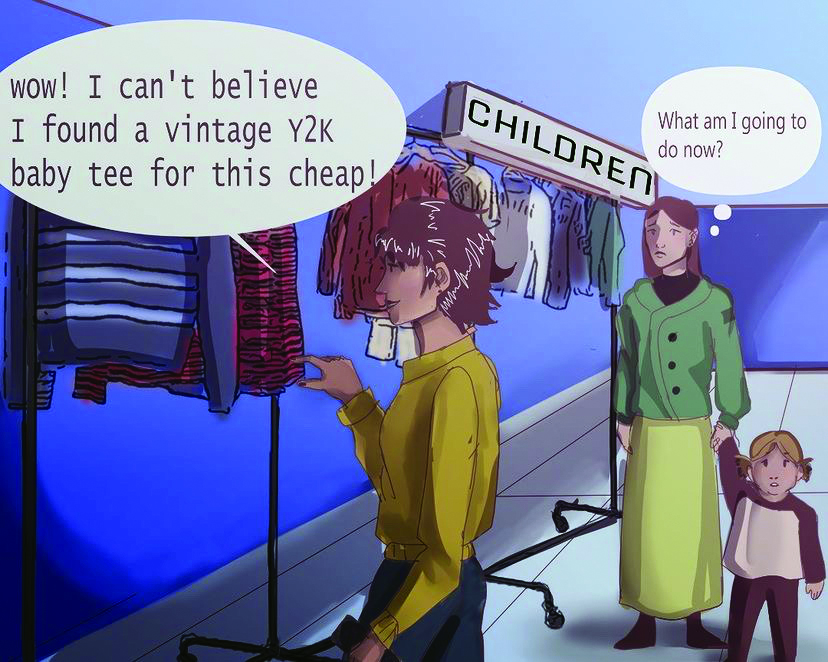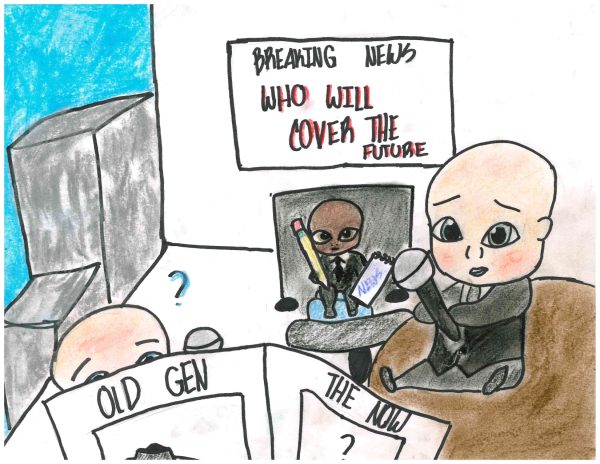Teenagers must thrift with empathy, not greed
With past fashion trends coming back into style, thrifting clothes has become a popular trend amongst teens. Teenagers need to step back and ask themselves: “Do I want this, or do I need this?”
As teens begin to buy out thrift stores and second-hand shops, lower-income families are given less of an opportunity to purchase the clothes they need. This becomes problematic when there is a lack of empathy in making these purchases.
Thrift stores are an excellent idea. They help to reduce waste and offer a more sustainable way to obtain clothes when we need them. According to Boston University’s The Emerald Review, “Two million tons of clothing items are dropped off to charities annually.”
This would mean that these donations help to keep two million tons of waste from hitting landfills each year. Additionally, most thrift stores and consignment shops receive these items for free, so they have the ability to lower their prices, compared to a typical store.
As a whole, thrifting is a great opportunity for lower income individuals to obtain clothes, as well as provide an outlet to promote sustainability. The issue with thrifting is that an increasing amount of privileged teens take advantage of its benefits when they do not need it.
Over the past year or so, thrifting clothes has appeared to become a trend. It seems logical, doesn’t it? With vintage fashion coming back into trend, wouldn’t a thrift store be a great, inexpensive way to achieve today’s hottest looks?
While yes, this may be true, it is extremely unethical and unempathetic for privileged teens to be clearing out thrift stores before those in need can reach the items inside.
I’m not saying that we need to stop shopping at thrift stores, we just need to think before making our purchases.
For starters, we need to be mindful of the time of year, especially if it is wintertime. We live in an area that can experience pretty harsh winters, which can be extremely difficult for lower-income individuals, seeing as how expensive winter coats and boots can get.
With that in mind, as it starts to get cooler out, please try to avoid purchasing these items if you already own them. We need to make sure that these things will be there for those who need them.
Additionally, we need to shop in our own size ranges. There are plenty of fashionable, straight-size clothes (sizes small through large) that get donated to thrift stores every day. The same, however, can not be said for plus-sized options, which can be few and far between.
Because of this, we need to stop taking all of the larger sizes off the racks. What if a plus-sized individual came to a thrift store, in need of clothes, and can’t find anything because a bunch of teenagers bought out the section for “oversized” items? What would they do then?
The same goes for children’s clothes. It is one thing for petite women to buy children’s clothing because they fit a smaller frame, but it’s a completely different story when teenagers are clearing out children’s sections to find ill-fitting shirts to wear as crop-tops.
It has become a trend for young women to buy children’s clothes for cheap at thrift stores and sell the items they find on sites like Depop, a popular site used for reselling clothes, for a much larger price.
If you search the term “y2k baby tee” (a phrase that suggests the item is from the early 2000s and would fit like a snug crop-top) on Depop, nearly 30,000 results come up.
Many of these are coming from brands like Justice and Hello Kitty and sport popular cartoon characters and phrases like “watch out 3rd grade, here I come” (yes, this was a real listing I found). These are children’s clothes.
Please, on behalf of any parents who may be looking for clothes for their children, leave the kids sections alone. These families probably don’t have the luxury of paying the inflated rates on Depop.
With all of this said, by no means should anyone stop shopping at thrift stores. The prior-mentioned benefits still stand. We just need to practice a little more empathy and consideration when making our next purchase.






